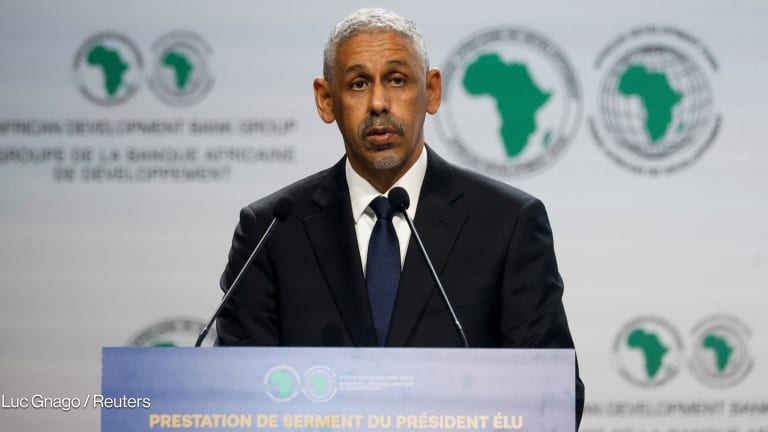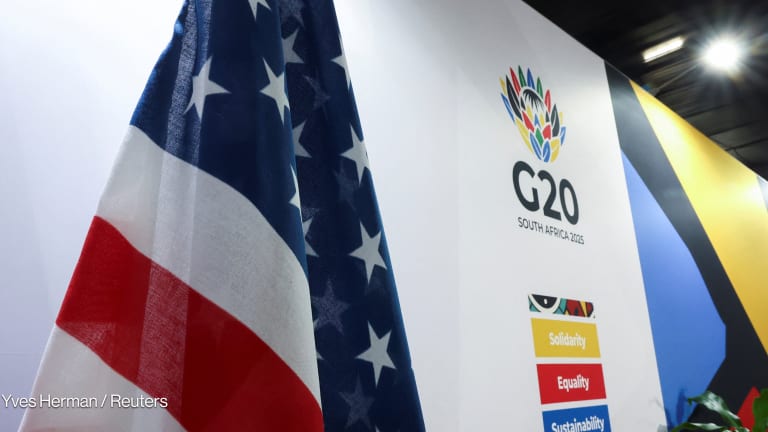
If analysts are correct, an area primed for even more development and growth over the course of the next several years and decades will be Latin America and the Caribbean. Luis Alberto Moreno, the president of the Inter-American Development Bank, appears well aware of this reality and the responsibility that comes with it. The LAC region’s largest multilateral institution and perhaps its most potent source of development finance, the Bank and its Colombian-American leader are working through a mammoth capital infusion, operational reforms, strengthening ties with other development institutions, and a campaign to improve transparency and accountability in the conduct of IDB-funded projects. Moreno sat down with Devex on the sidelines of the Asian Development Bank’s 45th Annual Meeting in Manila, Philippines, and provided some glimpses into IDB’s current and future priorities.
On IDB’s partnership with Asia and the Asian Development Bank:
“The two growth regions of the world today, in the emerging world, are Asia and Latin America. Now, Asia is many things, as you know. There are the [Association of Southeast Asian Nations member] countries, Central Asia, Southeast Asia, and East Asia. But the reality is that parts of Asia are increasingly trading tremendously with Latin America. And this has gone through a number of phases as you probably saw in an article we wrote with [ADB] President [Haruhiko] Kuroda. It starts with the galleons, the East Indies-West Indies kind of trade that started with silver and gold being sent from the Americas, to silk coming from this part of the world. When Japan’s economy started to grow, it started to integrate with Latin America. And then, some years after, came China, and increasingly India, and, of course, South Korea, Singapore and others. I think that, today, Asia has become an increasingly important trading partner for Latin America.”
On south-south cooperation:
“Certainly, the growth in the future is going to be more and more in the space of Asia and Latin America. But more importantly there’s a huge area that is opening up which is south-south cooperation. Many countries in the ‘south’ are extremely interested in looking at this cooperation. Latin America for many years looked [to the] ‘north’ and is finding that the north is looking south.”
On why the development community should focus more on Latin America:
“I agree with those who say that the aid community should focus more on Latin America, especially now that developed countries have a harder time keeping the levels of development where they were. There is no question that the big issue of the day is structural change, not only in the developed countries which need it. A larger part of the discussion is about growth and how to maintain growth. And the case of Latin American countries is not different. The structural changes mean investments that lead to higher productivity, investments that lead to the improvement of human capital, access to good infrastructure, but more importantly, to quality education, and science and technology. And all of that means that what you need is not less but more development finance, which would help – if done properly – create more growth.”
On climate change and renewable energy:
“One of our goals is that, by year 2015, 25 percent of our lending [will be for] sustainable energy and climate change. I think we’re now at almost 23 percent, if my memory doesn’t fail me. Scandinavian countries are important because they have been very [active] players on this issue. They are actually very active and very smart donors. And, of course, we also want to show them that Latin America is not only interested in this kind of development and green growth and the technologies that come with it, but more importantly, how Latin America is also an opportunity for economic growth for these countries.“
On the heterogeneous nature of the region and how that affects IDB operations:
“We hope, of course, to meet our goal which is to [loan] 35 percent of our total lending to more vulnerable countries. Last year, we were close to 32 percent. We hope to continue in that direction. That implies a specific focus on the Bank in the more vulnerable countries, which are typically countries in Central America, some in the Caribbean and a couple of countries in South America. But we understand that, in the end, our role is one of a development agency and as such we’ve got to focus on the countries that need more of our help. Finally, a country that is very important to us is of course Haiti which has tremendous challenges. We devote a large portion of our work and resources there.”
On the power dynamics between countries in LAC and how that affects IDB’s work:
“First of all, from day one, the IDB has been an institution where 50+1 percent of the shares belong to the borrowers. That means they have a very important voice. That is something that doesn’t happen in Bretton Woods institutions. Secondly, the selection of the head of the institution has always been an open and competitive process. In the case of the IDB, the presidents have been from Uruguay, Chile, Mexico, so there hasn’t been any concentration on any specific geography. Brazil is certainly the most important client of the Bank and like the case of the ADB, the big countries here are China and India, and in Latin America the big countries are Mexico and Brazil. And it’s only natural that these countries will become and continue to be the largest borrowers of our Bank. But I think, thankfully that’s the case because that allows the Bank because of the lending it does to these countries, to use those resources to focus precisely on the smaller and vulnerable countries.”
On his tenure at IDB and the restructuring implemented under his watch:
“I believe [the restructuring] is a success. Arguably, today, our clients see a bank that is much more flexible, much more focused on client needs. In terms of staffing, there will always be criticism, I mean, especially in an organization as big as ours. We have close to 2,000 permanent staff and maybe close to another thousand consultants. Having said that, one of the things that we do is look at is staff morale. Actually, there are areas where we’ve made good progress, there are other areas where we need to continue to do progress and this requires a fundamental commitment by the senior management of the organization. Not only that, I mean, while being president of the Bank, we managed to increase, almost double the size of our capital base and also focus on the areas of the Bank that have not been focused [on] in the past: most important of which has to do with development effectiveness.”
“…All of this restructuring has led to more people in the field, you know, to a younger generation of professionals and change, as far as I’m concerned, in an institution like this change shouldn’t be once in a lifetime but a constant factor. I believe that you’ve got to be constantly looking for changing and fine-tuning and if something is not working stop doing it. I’m convinced that, as far as my tenure in the Bank, I will continue to do this.”
Read more:








